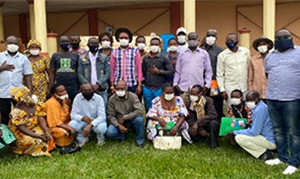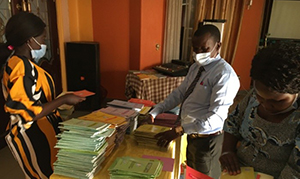MTaPS' Support
In DRC, MTaPS’ technical assistance is focused on addressing the complex problem of antimicrobial resistance (AMR). The program is assisting the Ministry of Health (MOH) and key stakeholders to strengthen systems and practices for infection prevention and control (IPC) and optimal use of antimicrobial medicines and boost multidisciplinary and multisectoral collaboration for improved antimicrobial stewardship (AMS). To inform the scale up and roll out of AMR containment interventions, the MTaPS approach combines planning and implementation with an embedded monitoring and knowledge-sharing element to capture, document, and disseminate experience and results.
MTaPS focuses on the following technical areas:
Strengthening multisectoral coordination for AMR
To improve IPC and AMS coordination, MTaPS is helping to define roles and clear lines of accountability between the AMR Technical Working Group (AMR-TWG) and the multisectoral One Health coordination committee. Further, MTaPS is assisting the AMR-TWG to engage with the Ministry of Agriculture, Ministry of Fishery and Livestock, and civil society organizations to support coordination of AMR-related activities within and across sectors. Other assistance to the AMR-TWG includes supporting the establishment of its AMS and IPC technical subcommittees that will spearhead implementation of AMS and IPC interventions contained in the national action plan (NAP) on AMR.
Optimizing the use of medicines and strengthening AMS
Support the formulation of a national strategy and action plan on AMS
MTaPS is working with the Department of Pharmacy (DPM) of the MOH to develop a national AMS strategic plan and action plan that will guide AMS interventions to improve prescribing and use of antimicrobial agents and adherence to standard treatment guidelines. Activities include an assessment to determine whether the policy and legal framework is available and covers all needed aspects of antimicrobial regulation; a mapping of key stakeholders involved in AMS; and, in collaboration with the World Health Organization (WHO), a rapid assessment of antimicrobial use and consumption in the human health sector, including compliance with standard treatment guidelines.
Integrating WHO AWaRe classification into the essential medicines list
MTaPS is supporting the DPM to incorporate the WHO access, watch, and reserve (AWaRe) categorization of antibiotics into the national EML to provide a framework and guidance for AMS monitoring, enhance the utility of essential medicines, and optimize the use of antimicrobials. Further, MTaPS will help the DPM and other stakeholders to review and update the infectious diseases component of the standard treatment guidelines and develop guidance to help health facilities implement the AWaRe categorization and updated treatment guidelines.
Strengthening Drug and Therapeutics Committees
The DRC NAP recognizes the key role of Drug and Therapeutics Committees (DTCs) in strengthening appropriate use of antimicrobials. MTaPS is working with the MOH to establish and strengthen the capacity of DTCs to support AMS and IPC interventions in selected health facilities. Activities include providing training, on-site coaching, and mentoring to capacitate DTCs to design and implement continuous quality improvement approaches with incremental self-improvement plans and targets to promote health provider compliance with antimicrobial treatment and IPC guidelines, among other objectives.



